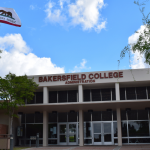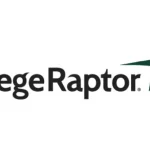2021 was the year AI chatbots grew up. For several years now, they have often been seen as a secondary communications system. However, over the last year they have become a much more integral channel, empowering institutions to reach students both proactively and reactively 24/7, and bridging the “engagement gap” that so often hurts both enrollment and student success.
Today, AI chatbots are emerging as a core element in a broader “Smart Communications Platform” that is helping colleges and universities accelerate their drive toward Digital Transformation (Dx). In 2021, across the Ocelot platform, over 9 million AI conversations took place, more than double the that of the 2020 figure.
We know that chatbots are engaging pathways for students to converse with their institution. They provide students with quick, short and consistent communications that keep them engaged and help them persist through challenges, like paperwork completion and pathway selections.
In 2021, we observed chatbots start to mature, and in the process, have an impact that few could have envisioned three to five years ago. Chatbot technology has continued to grow from 2020, when urgency for virtual engagement was most acute at the onset of the pandemic, leading to a 252% increase in chatbot usage across the Ocelot platform in the first 90 days of campus shutdowns.
Here are some notable evolutions as we look back on 2021:
Broadly, Growing into a Smart Communication Platform
Consumer expectations around service and support are rising. They have come to expect the one-click Amazon shopping experience, where recommendations are served up via personalized service based on their individual preferences. Students expect the same from their current or prospective college or university. AI-powered chatbots are now bringing these features to higher education on a go-forward basis, positively impacting the student experience and journey.
Ocelot’s “Smart Communication Platform” includes AI-powered chatbots and live chat, AI-powered two-way SMS campaigns, data analytics, and guided work-flows – enabling colleges and universities to use a common knowledge base that ensures that students are provided personalized, yet consistent information when they need access to it.
Creating Efficiency: Reducing Phone Calls and Emails
With Ocelot’s platform, SUNY Empire State College (which historically received north of 100,000 phone calls every year) reported a 28% decrease in inbound calls since the launch of its chatbot.
Pre-chatbot, Bakersfield College’s Office of Financial Aid would receive 500-600 emails per day. Post chatbot launch, the office is receiving nearly 50% less email traffic, about 200-300 emails per day
At CSU Long Beach, the reduction in emails and phone calls is 33% since launching their chatbot.
Driving Enrollment and Engagement: Completing Applications and Attending Workshops
St. Petersburg College initiated an AI-powered SMS campaign for 14,700 contacts who had not yet enrolled and saw 12.4% of the contacts complete enrollment, resulting in $1.6 million in tuition revenue.
Rowan University in New Jersey found that by using the Ocelot chatbot platform, they are improving their rate of converting prospects into students. Their conversion rate for non-chatbot users is .45%. Their conversation rate for those users that did chat with the chatbot is .87%. This is almost double on their return for those users that touch base with Ocelot’s chatbot first.
College of the Desert (Palm Desert, CA) created an AI-powered SMS text campaign for students who did not have their FAFSA/Dream Act completed. They then invited students to attend an in-person workshop to ensure that they could remain enrolled in the program. Turnout substantially increased compared to those workshops that were not featured as part of the campaign.
Supporting Student Across the Entire Student Journey
We continue to get a better understanding of “where” and “when” students most often need support. Student needs cut across all departments, including Admissions, Financial Aid + Billing, Registrar, Academics/Advising, etc.
Traditional legacy channels are often met with more friction. Students may not be checking or responding to email. We continue to see that they prefer to communicate via the channels and tools they use in their daily life, most of which center around their mobile device. They also tend to operate on their own schedule, often trying to get help at (very) off hours (while offices are closed and staff are fast asleep).
Colleges and universities are leveraging Smart AI Communications to better connect with students – meeting them both where and when they need it, by providing 24/7/365 service and support. This approach brings success front and center – ensuring students have what they need to navigate the complex processes they are often unfamiliar with across higher education.
A recent notable example: Bakersfield College’s Financial Aid Office targeted students with outstanding debt with an AI-powered SMS campaign. The office reached out to over 1,500 students that had outstanding balances, explaining to them that they have a recovery grant (HEERF funds) they could utilize to pay them. At that point, Bakersfield College had $3.4 million in outstanding debt. Within 14 days of sending this SMS campaign, their outstanding debt decreased to $1.7 million.
Expanding Student Access During the “3rd Shift” and Peak Periods
Nearly 40% of chatbot conversations are taking place outside of normal office hours. Connecting with students during “the 3rd shift” (between the hours of 5pm and 9am).
There were also unsurprising spikes in usage during the “August Crunch” – those few weeks leading up to the start of the fall semester.
Further information on these trends can be found in our inaugural AI Communications Benchmark Study.
The Wrap
Colleges and universities face the challenges of the 3 E’s: Enrollment, Engagement, and Efficiency. In 2021, AI-powered chatbots evolved in ways to further help schools address these challenges. The “Smart Communications Platform” is answering the call to provide higher education institutions with the capability to be both proactive and reactive in engaging with students.
Looking ahead to 2022, our platform is going to become even more powerful as it integrates further with other technologies to create more efficiencies and additional opportunities for engagement, providing students with consistent and personalized communication channels with their school.















